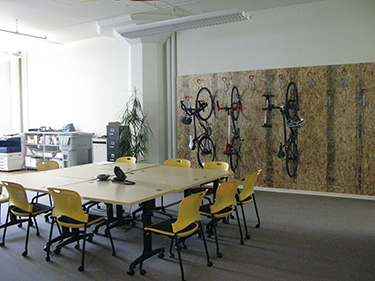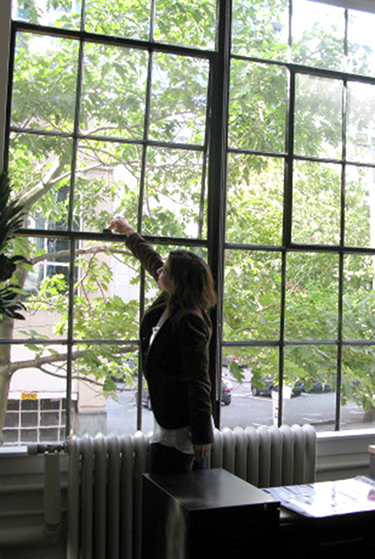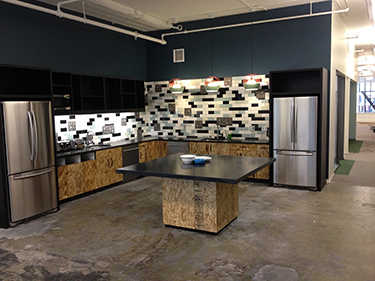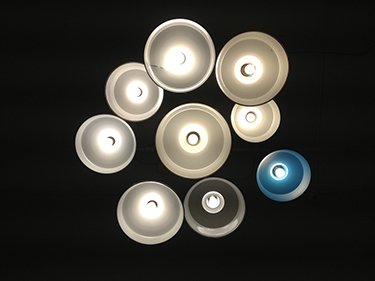|
Subscribe / Renew |
|
|
Contact Us |
|
| ► Subscribe to our Free Weekly Newsletter | |
| home | Welcome, sign in or click here to subscribe. | login |
Environment
| |
 |
February 27, 2014
LEED shifts focus from design to performance
Paladino

Leonard
|

Snyder
|
Beginning June 1, 2015, all projects that register for LEED certification will be required to use the new version, LEED v4.
LEED v4 introduces a number of new and revised prerequisites and credits, as well as updated reference standards for existing credits. LEED v4 is different from current and past versions of the rating systems, with a much clearer focus on measured performance.
The latest version of the U.S. Green Building Council’s green-building rating systems was officially released at the Greenbuild 2013 conference in Philadelphia, after an in-depth public comment process and a beta test of over 100 projects. It was well-received by USGBC membership, who voted by an overwhelming 86 percent to approve the new rating system.
The new version will be a significantly different experience, even for project teams who have certified many projects under previous versions. This article briefly summarizes the key changes to the rating system and includes lessons learned from a pilot project, with practical ways to take advantage of v4.
Major changes
Location and transportation/sustainable sites
Sustainable sites credits have been separated from location and transportation credits. Sustainable sites credits focus on optimizing the project site design relative to the site’s physical boundaries, while location and transportation credits reward higher-density development well-served by amenities and alternative transportation infrastructure.
Water efficiency
LEED v4’s new and updated water prerequisites require whole-project metering, 30 percent irrigation savings, and higher efficiency for kitchen equipment and appliances. The BD+C and ID+C WE credits clearly focus on strategies to establish long-term efficient management of resources, rather than just awarding points based on predicted savings.
Energy and atmosphere
As with LEED 2009, all strategies and technologies that reduce a project’s energy cost are awarded credit in the energy and atmosphere category. Whole-project energy metering is required, and energy performance is now compared to an ASHRAE 90.1-2010 baseline, which is an average of 18 percent more efficient than the LEED 2009 baseline, according to the U.S. Department of Energy.
Materials and resources
Interestingly, the USGBC stakeholder group with the highest approval rate for v4 was producers (primarily product manufacturers) who are arguably the group most impacted by the rating system.
Under the materials and resources category, individual credits for recycled content, regional materials and certified wood have been eliminated. New credits reward project teams for using materials with known ingredients and documented life-cycle impacts; more benign products achieve more points.
Indoor environmental quality
LEED v4 rewards design teams who provide a superior indoor environment across the spectrum of human health and comfort. One example is the new interior lighting quality credit, which combines criteria for fixtures, light sources and interior surfaces with the previous Lighting Controls credit for a more holistic evaluation of lighting-system performance.
Innovation/regional priority
Innovation and regional priority credits follow a similar structure to LEED 2009. A LEED AP with specialty is now required to earn that particular credit, providing an incentive for professionals to update their accreditation.
Lessons learned
Paladino was master technical editor of the LEED v4 reference guides, so when our Seattle office relocated in September we were excited to test the new rating system by certifying through the v4 beta application process.
Our approach to green-building design, construction and operations has always been to focus on core values first, and use a third-party certification system such as LEED to confirm the project satisfied the owner’s project requirements.
Our intent was to create a healthy, collaborative work environment with reduced carbon emissions. During construction we decided to attempt LEED v4 ID+C pilot certification rather than pursue the initial goal of LEED 2009 CI platinum.
We were learning by doing; however we were shocked when we did a gap analysis between the rating systems and found that our projected LEED 2009 platinum project would only qualify for silver certification under v4!
We were satisfied that our new office (which includes operable windows, bike parking in the suite and carbon-neutral steam heating) met our goals. Some of the difference in projected certification level was due to what we could control, meter and measure in a commercial office located in a historic building, where we pay for utilities as part of the rent.
Rather than point-chase a higher LEED rating, we used the project as a learning opportunity. Based on our experiences, we recommend that teams consider using the following three strategies in their first LEED v4 attempts:
• Preparation is essential: Perform a schedule of value analysis for products and materials very early in design. The analysis should confirm that all materials are required for the project (what’s more sustainable than the product you don’t have to buy?) and identify a beneficial materials palette that satisfies the owner’s project requirements.
Even materials that we have seen on hundreds of LEED projects do not necessarily contribute to LEED v4 credits because manufacturers are still working through the rating system changes, and new documentation is just starting to become available.
• Engage the team: With a significantly revised rating system focused on performance rather than as-designed conditions, LEED v4 encourages integrated design and decision making. Specialty expertise will be required for some credits where architecture and engineering firms may have used generalists before.
Pre-construction preparation with the general contractor will be invaluable to optimize the design, construction and budget (and by extension LEED rating) simultaneously rather than the more prevalent pass-the baton-process.
Our internal commissioning team is using the monitoring requirements of LEED v4 to create a learning lab in our office, routing waste heat from the servers into the occupied office and exploring how carbon dioxide set points relate to natural ventilation needs.
• Take your time: LEED v4 is new. Most new things are challenging to get your head around the first time through. The certification process rewards attention to detail, and taking time to do it right throughout the design and construction process makes documenting credits infinitely easier.
Patrick Leonard leads the portfolio services practice at Paladino and Co., a green-building consulting firm. Megan Snyder is a green-building consultant with Paladino.
Other Stories:
- Investing in green spaces can pay off for property owners
- LEED vs. Green Globes: How to choose
- How transparency can change the game on green building
- LEED is here to stay so long as owners find it useful
- Old warehouse now a super-efficient office building
- U.S.-Mexico border crossing gets a net-zero makeover
- King County to try new rating system for infrastructure
- Historic rehab a test for performance-based codes
- Stone34 to put its deep green bona fides to the test
- No guts, more glory: Why it pays to go minimal
- State seeks to wring more value from its projects






